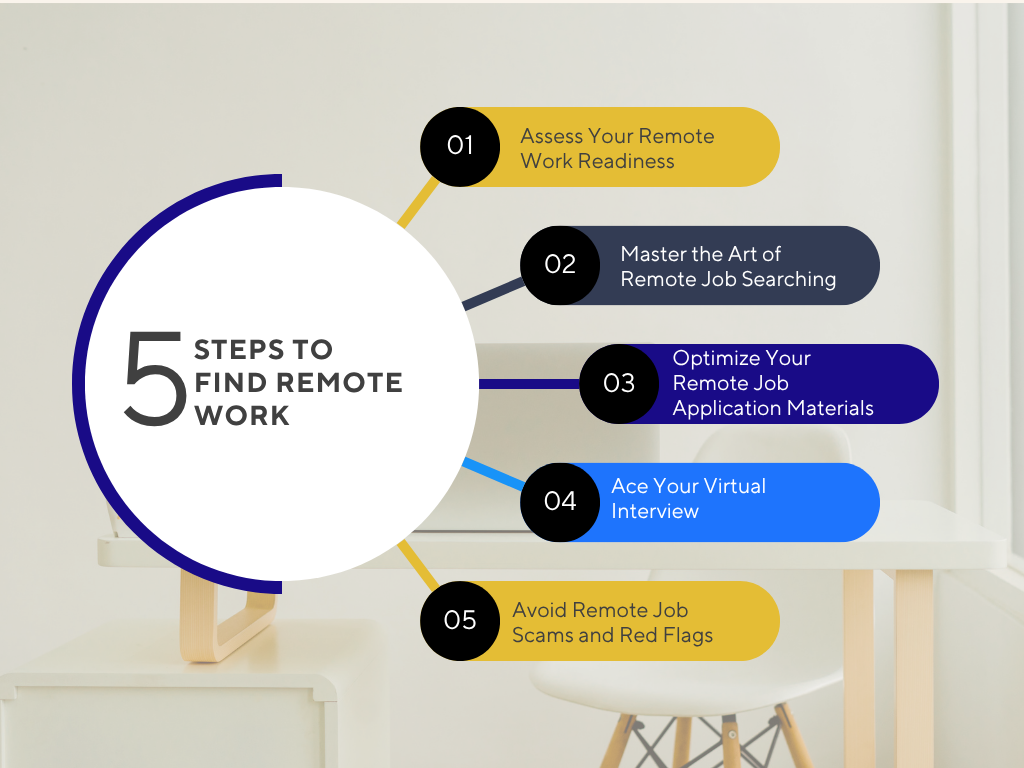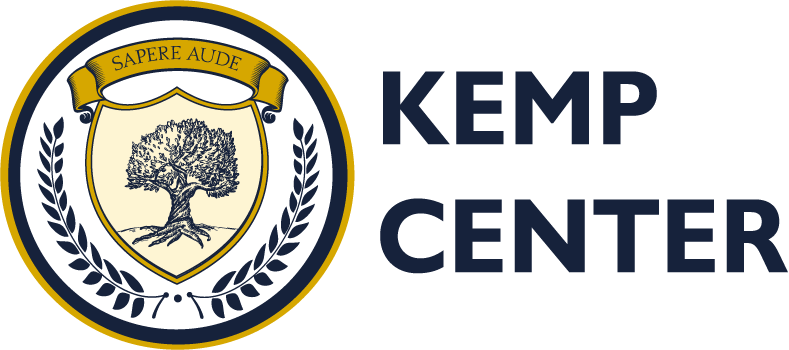How To Find A Remote Job - 10 Tips For Landing Your Dream Position

Table of Contents
It’s a rainy Monday morning and you are stuck in yet another traffic jam. The brake lights stretch out in front of you like a red snake, as you clutch to your lukewarm coffee, you start to wonder ‘do I have to live like this’. You start fantasizing about skipping the commute, working your sweatpants or taking meetings in a tropical location. Guess what? You are not alone.
According to Global Workplace Analytics, remote work as skyrocketed up 159% since 2009. This was once a perk niche, it is now a mainstream reality. Companies big and small across the globe are offering flexible, location-independent roles. So, join us as we walk you through 10 actionable steps to help you find and land a remote job that fits your skills, lifestyle, and long-term career goals.
The Remote Work Revolution: Why Now Is the Perfect Time
In the several years that I have helped people transition to a remote role at KEMP Center, one sentiment remains true: timing has never been better. Remote work began as a response to the pandemic, has rapidly grown and shifted into how and where we work. More companies are embracing distributed teams, and job seekers are no longer limited by geography when searching for meaningful employment.
“Remote work opportunities grew by 12% in 2023 alone, despite overall job growth slowing.”
— FlexJobs 2024 Remote Work Report
According to the Bureau of Labor Statistics, nearly 28% of the U.S. workforce engaged in some form of remote work as of early 2024. This goes from the tech industry to education, to customer service the number of remote workers has surged. This has opened the door for millions to reimagine their career path.
Let’s take a quick look at a chart to see how remote jobs have evolved in recent years:
Year | % of Workforce Working Remotely | Key Trends |
2019 | 5.7% | Pre-pandemic flexibility limited |
2020 | 42% | Pandemic drives emergency remote shift |
2021 | 26% | Hybrid models emerge, remote work persists |
2022 | 29% | Companies adopt long-term remote policies |
2023 | 28% | Growth stabilizes with sustained demand |
You not only get to escape commutes, as a remote working professional you gain work-life balance, lower expenses, and the freedom to work from anywhere. So, whether the dream is to move abroad, spend more time with your family or have more control over your time. There has never been a better time to pursue a remote job.

Step 1: Assess Your Remote Work Readiness
Before, you go a send out hundreds of resumes and applications, it’s important to evaluate with you are ready to thrive in a virtual workplace. Remote roles come with freedom, but also you need to have strong self-management, digital fluency, and the ability to communicate effectively without face-to-face interaction.
Skills Assessment
Let’s go over a checklist, to see if you have the skills to succeed in a remote role:
- Proficiency with digital communication tools
- You have good time management skills, and you can prioritize tasks
- You have strong communication skills for emails and chat tools
- You know how to organize digital files and a digital workflow that is cloud-based
- You have basic spreadsheet knowledge. You may want to consider the KEMP Center Excel course to sharpen your data skills
Remote Work Personality Traits
To be a successful professional in a remote role, reflect on whether your personality aligns with the job:
- You need to be self-motivated and disciplined
- Comfortable working long hours independently
- You need to be adaptable and a problem solver
- Have good and clear communication skills both written and verbal
- Not easily distracted by home or non-office environments
“Remote work isn’t just about where you work—it’s how you work. The best remote professionals are proactive communicators who thrive on autonomy.”
— Tara Green, Remote Work Strategist & Coach
Technical Requirements
The next thing that you need to check is to meet the technical requirements to be able to work remotely. Some common things to double check include:
- Reliable high-speed internet connection (25 Mbps or higher recommended)
- Make sure you have a quiet dedicated workspace where you won’t have many distractions
- Laptop or desktop with updated operating system and security software
- Have a webcam, microphone and headphones for virtual meetings
- Backup power or hotspot options in case of outages
When you take the time to assess your readiness to take on a remote job, it will help you go into this new phase of your career more confidently. Once you’ve identified areas for growth, you can begin strengthening your remote work profile: one skill, tool, or habit at a time.
Step 2: Master the Art of Remote Job Searching
Have you found yourself scrolling through remote job boards with little success. You are not alone. Many remote job seekers often hit a wall when using traditional job search methods. If you want to stand out you need to adapt smart, targeted strategies that go beyond the basics and tap into where remote-first companies are actually hiring.
Premium Remote Job Boards
Consider using vetted platforms that are dedicated for remote roles such as:
- FlexJobs – Trusted by remote professionals for its hand-screened listings, FlexJobs offers high-quality, scam-free opportunities across industries.
- RocketJobs – is a popular job board for tech, marketing, eCommerce and customer service remote opportunities.
- Dynamite Jobs – Features remote-first companies actively hiring, with filters for time zones and job types.
Using these types of job boards, will speed up your job hunt and get you that dream role.
Company-Direct Applications
You can show some initiative and try to apply directly to companies that you know hire for remote roles. Take time research remote-first companies via LinkedIn, Gitlabs, etc. Then go to their career page to see if there are any open roles. Not all companies use public job boards. Next take the time to tailor your resume to the role, and make sure you emphasize remote work skills. Finally, send a short and personalized cover letter, where you can describe why you’re a culture and mission fit.
Networking Strategies for Remote Roles
To gain more opportunities for remote roles, build relationships and connections. There are a few ways you can approach networking for remote roles:
- Join remote-focused communities like Remote Work Hub, Indie Hackers, or TechLadies.
- Sign up and attend virtual conferences or webinars in your niche. These events are often a goldmine for leads.
- Use LinkedIn to reach out to professionals who already work remotely. But make sure you reach out for insight, not a job.
- Before requesting referrals offer value, such as relevant resources or feedback.
Social Media Job Hunting
You can use social media platforms to discover hidden potential and remote job opportunities. Explore platforms such as LinkedIn, X (Twitter), and even Reddit.
- You can set up alerts on LinkedIn to get notified for filters such as “remote” and “work from home.”
- On these platforms, make sure to follow remote-friendly companies along with recruiters. You will see jobs posted before they hit the boards.
- Search hashtags on social media platforms, some good ones include #RemoteJobs, #WorkFromHome, or #HiringRemote.
- Post consistently on LinkedIn and other platforms about your skills, recent projects, or career goals. This will build a visible personal brand.
Step 3: Optimize Your Remote Job Application Materials
In the remote job market sending your resume and cover letter isn’t going to cut it. Companies are looking past those technical skills, they are looking for soft skills such as working independently and communicating effectively in a remote-first culture. We will help you prepare a set of application materials that will actually sell you as a candidate.
Resume Optimization for Remote Roles
Your resume needs to be more than just a list of skills and experiences. In order to stand out in the remote work world, you need a professional resume that is optimized for the remote role you are seeking.
You need to showcase your ability to succeed.
Here is what you may have had before in your resume:
Customer Service Specialist, XYZ Corp
- Handled customer support tickets and assisted with onboarding new users.
This is what this type of experience can look like after you optimize it for remote roles:
Remote Customer Support Specialist, XYZ Corp (Fully Remote)
- Resolved 50+ support tickets daily using Zendesk, maintaining a 98% customer satisfaction rating.
- Trained and onboarded new team members via Zoom and Loom, improving ramp-up time by 30%
- Collaborated across time zones using Slack, Trello, and Google Workspace.
Why does this second version work better for remote roles?
Well there are a few reasons such as:
- It is optimized in terms of keywords, which is crucial for ATS and hiring managers are well. It includes the keyword ‘remote’
- You also highlighted key tools that are used during remote work such as Slack, Trello or Google Workspace
- You have showed that you are able to manage your own time, deal with time zones and communicate effectively on digital platforms.
- Finally you have quantified results to such impact
“Remote employers need evidence that you can thrive without direct supervision. Show them how you’ve already succeeded in that environment.”
— Melissa Chen, Certified Career Counselor
Cover Letter Strategies
I don’t know about you, but I personally hate writing cover letters. For many years I would skip applications that required cover letters, but then I would miss out on great opportunities.
So here are some tips and tricks I learned along the way to write effective cover letters for remote roles:
- You need to open with enthusiasm about working remotely and that you align with the company’s mission.
- This is also a great opportunity to share a short story. For example, you may have had the opportunity to manage a cross-functional project asynchronously.
- You can also mention your home office setup or time zone flexibility, if relevant.
- Make sure to customize each letter to a specific role and company culture
Here is an example of an opening line:
“As someone who has led remote teams across three continents, I was excited to see your posting for a fully distributed Marketing Manager.”
Building a Compelling Portfolio
Portfolios are not just for the design field; they can be a game changer for many roles. It shows your work, initiative, and communication style—all traits remote employers value.
To create a portfolio, here are some key action items:
- Include 3–5 projects that showcase relevant skills and outcomes.
- Write short case studies explaining your process and remote collaboration experience.
- Make sure to use a clean and mobile friendly format such as Notion, Wix, or personal website.
- Finally add a link to your GitHub, Behance, or writing samples, depending on your field.
Need help? Check out our portfolio building guide and our recommended skills courses to level up your toolkit.
Step 4: Ace Your Virtual Interview
Virtual interviews have become the new normal and honestly, it’s not enough just to dress nice from the waist up. Having done more than 500 virtual interviews, I can tell you that the most successful candidates are those who are well-prepared, have clear communication skills, and exhibit true remote readiness.
Follow along throughout this step and you will learn how to optimize your setup, master virtual etiquette, and confidently answer questions that test your remote work compatibility.
Technical Setup and Testing
A glitchy call or poor lighting can distract from your interview and from you. This can possibly knock you out of an opportunity before you even had the chance to say hello.
To avoid this scenario, a little preparation never hurt anyone. Here is a checklist to check that your technical setup is a-okay:
- Test your internet speed (25 Mbps+ recommended)
- Use a high-quality webcam, headphones and microphone
- Make sure to choose a quiet, well-lit place with a clean background
- Position your camera at eye level to simulate in-person eye contact
- Close all unnecessary tabs and turn off notifications to avoid distractions
- Do a tech run-through the day before with a friend or mentor
Virtual Interview Etiquette
Just like with a regular interview, hiring managers are paying attention to how you communicate and engage virtually. They pay special attention to this because this is how you will be working if you are hired.
Here are some of our top virtual interview etiquette tips:
- Log in 5–10 minutes early to show punctuality
- Make it a habit to mute yourself when you aren’t speaking during a group meeting
- Speak clearly and pause slightly to account for lag
- Make intentional eye contact by looking into the camera, rather than at the screen
- Send a follow-up thank-you email within 24 hours
Answering Remote-Specific Questions
Interviewers want proof that you can work independently, communicate asynchronously, and stay productive without constant supervision. Here are some common questions you may encounter, and strong answers, that you can use during your next interview.
Question #1: How do you stay productive while working remotely?
Answer: Well, I use time blocks in Google Calendar. I plan focus hours in the morning and meetings in the afternoon. I also use Notion to track my tasks and keep stakeholders up to date asynchronously.
Question #2: How do you handle communication challenges in remote teams?
Answer: I am very proactive, so I tend to document everything. Honestly, if I think something is unclear, I try to ask follow up questions on Slack or schedule a quick Zoom call. I recap meetings with written summaries, this way nothing gets lost or missed.
Question #3: Describe your ideal remote work environment
Answer: I have dedicated office space at home. I have a second monitor and noise cancelling headphones. I have found that this type of set up keeps me focused and is especially useful when collaborating across different time zones.
Step 5: Avoid Remote Job Scams and Red Flags
Remote work continues to gain in popularity and unfortunately, the number of sophisticated scams targeting job seekers. According to the Federal Trade Commission (FTC), reports of job scams surged by over 30% in 2024, with fraudsters preying on hopeful candidates eager for flexible roles.
Protecting yourself starts with knowing what to watch for and how to verify genuine opportunities.
Common Remote Job Scam Types
There are a few common remote job scams to look out for:
- Fake job postings. These usually promise high pay for little work, often with vague descriptions.
- Upfront scam fees. They will request payment for training, background checks or equipment.
- Phishing attempts. These are companies or people disguised as recruiters asking for personal info.
- Pyramid or multi-level marketing schemes. These can be disguised a ‘work-from-home’ opportunities but usually the person at the top makes the most money.
Red Flags to Watch For
Here is a red flag checklist that we created, to help you see the signs before you are in to deep:
- Receiving a job offer without a job interview or minimal vetting
- Requesting money upfront for alleged ‘processing’ or ‘software’ costs
- Getting unprofessional emails from free domains
- You feel pressured to make decisions quickly or share sensitive information
- Promises of extremely high pay for easy work
- They don’t have a clear company website and any contact info is hard to verify
How to Verify Legitimate Opportunities
Here are some of our top tips to help you verify legitimate opportunities:
- Research the company online and use platforms like Glassdoor to see reviews
- You can verify recruiter identity using LinkedIn or other company directories
- Use official channels to confirm job postings
- Trust your instincts. If something feels off, run. If it sounds too good to be true, it probably is.
When you stay vigilant, you can avoid common pitfalls and pursue a rewarding remote career.
Industries and Roles Perfect for Remote Work
The remote work movement has reached across various industries and across the globe. Also, whether you are just starting out or a seasoned expert, there are more paths than ever to build a thriving remote career.
Based on current data from leading job boards like FlexJobs, Remote OK, and We Work Remotely, the following industries are seeing sustained growth in remote hiring.
Here is a chart of the fastest growing remote job categories:
Industry | Remote Job Growth (YoY) | In-Demand Skills |
Software Development | +17% | Programming (Python, JavaScript), Git |
Marketing & Digital Media | +14% | SEO, Content Strategy, Email Marketing |
Customer Support | +12% | CRM tools, conflict resolution |
Project Management | +10% | Agile, Trello, Jira, Time Zone Coordination |
Education & eLearning | +9% | LMS platforms, instructional design |
Data & Analytics | +8% | Excel, SQL, Data Visualization |
Virtual Assistance | +7% | Calendar Management, Communication Tools |
Source: FlexJobs 2025 Q1 Remote Work Report
Setting Yourself Up for Remote Work Success
So, transitioning to remote work is more than just swapping your office chair for a couch. Success in a remote role depends on your environment, habits and tools, and these are all things that you can control.
After helping hundreds of professionals launch their remote careers, I’ve found that long term success comes down to smart setup, time discipline and proactive communication. Here’s how to get started:
Creating Your Home Office
When you have a well-designed home office, you reduce distraction and support your focus. Also, you will have better posture and mental boundaries between work and life.
Check out this home office checklist:
- Create a dedicated workspace that is separate from high-traffic or noisy areas
- Invest in an ergonomic chair and desk to avoid physical strain
- Have good lighting both natural and lamps for day-to-day work along with Zoom calls
- High-speed internet (25 Mbps+ for video calls)
- Backup power or hotspot option in case of outages
- Noise-canceling headphones and microphone for clear communication
“Your environment either supports or sabotages your productivity. Treat your home office like a launchpad, not just a desk.”
— Jane Castillo, Productivity Consultant
Time Management and Productivity
When no one’s watching, staying on task can be tough but it’s not impossible. It’sentirely doable with the right systems in place.
Here is my own routine to ensure a productive workflow:
- Start with a morning ritual (for me it’s coffee, opening up the windows and breakfast)
- I use time blocks in my Google Calendar to separate deep work from meetings
- I track tasks in ClickUp and Microsoft office
- End with a 5-minute shutdown routine to mark the workday’s close
Here are some tools and tips for better time management:
- Use the Pomodoro Technique which basically means that you work in intervals, traditionally its 25 minutes with a short break. After you have completed a set of four, you can have a longer break.
- Batch similar tasks together to reduce mental switching. Also, figure out when you do which tasks best. For example, I’m more focused and creative in the morning, so I write posts and create during those hours. I leave more mundane tasks to the latter part of my day.
- Set weekly goals every Monday morning
- Review your progress every Friday with a short self-check
Explore our time management course for deeper strategies.
Communication and Collaboration Tools
When you work on a remote team, you will soon see that you live and die by your tools. The more comfortable you are with certain tools the more your productivity grows. Now, if you are uncomfortable then you are going to waste time.
Here are some must-know tools for remote work:
- Slack – Real-time team chat and channels
- Zoom / Google Meet – Video meetings and screen sharing
- Loom – Asynchronous video messages for updates or walkthroughs
- Asana / Trello / ClickUp – Task and project management
- Notion – Centralized documentation and knowledge sharing
- Google Workspace – Docs, Sheets, and shared calendars for real-time collaboration
Frequently Asked Questions (FAQ)
How long does it typically take to find a remote job?
This depends on the industry, your experience and your effort. On average though most people can find a remote job within 2–6 months, especially when applying consistently, tailoring each application, and networking effectively.
Now, if you are looking for an entry level role this may take longer due to higher competition, but persistence and upskilling can dramatically improve your chances.
Can I negotiate salary for remote positions?
Yes. Remote roles are still full-time positions, where employers expect negotiations. Make sure to do your research with the help of tools such as Glassdoor, LinkedIn or PayScale. Also, be ready to justify your rate with skills, experience, certifications and even the cost of living.
What if I have no remote work experience?
Start by highlight remote work skills and transferrable skills. Some popular skills to leverage in this type of scenario include problem solving, digital communication, and time management. You can also mention any remote-adjacent experiences (e.g., managing school projects on Zoom or freelancing).
How do I know if a remote job is legitimate?
Watch out for typical red flags such as vague job descriptions, payment upfront, or interviews conducted only via messaging apps. You can always verify companies with LinkedIn presence and recruiter credentials.
What are the best times to apply for remote jobs?
January to March and September to October are peak hiring seasons. However, remote roles are posted year-round. You can even set up alerts on Google, LinkedIn and other platforms to be notified when an interesting role has popped up.

Summary
Are you tired of your career being just traffic jams, fluorescent lighting, and a vending machine lunch? With the right skills and a solid Wi-Fi connection, remote work isn’t just possible—it’s within reach.
Design a life that works for you, that isn’t centered around your daily commute to and from the office. You are so much closer than you think.
Here is your remote work ready recap:
- Your laptop is charged and ready to conquer the world with you
- Your camera angle shows you at your best angle
- Your resume is dripping with keywords that ATS wouldn’t be able to miss
- Your cover letter is engaging and enthusiastic, it doesn’t start with “To whom it may concern”
- Your portfolio is 5 out of 5 stars
- You have set your confidence on Do not Disturb
Don’t wait for that dream job to find you, go get it. Using the right tools and strategy you can find the right job and maybe even better coffee.
Ready to accelerate your remote career transition?
Our comprehensive career development courses give you the skills and confidence to land your dream remote role—whether you’re mastering Excel or building a portfolio that screams “Hire me!” louder than a Slack notification at 5:01 PM.
